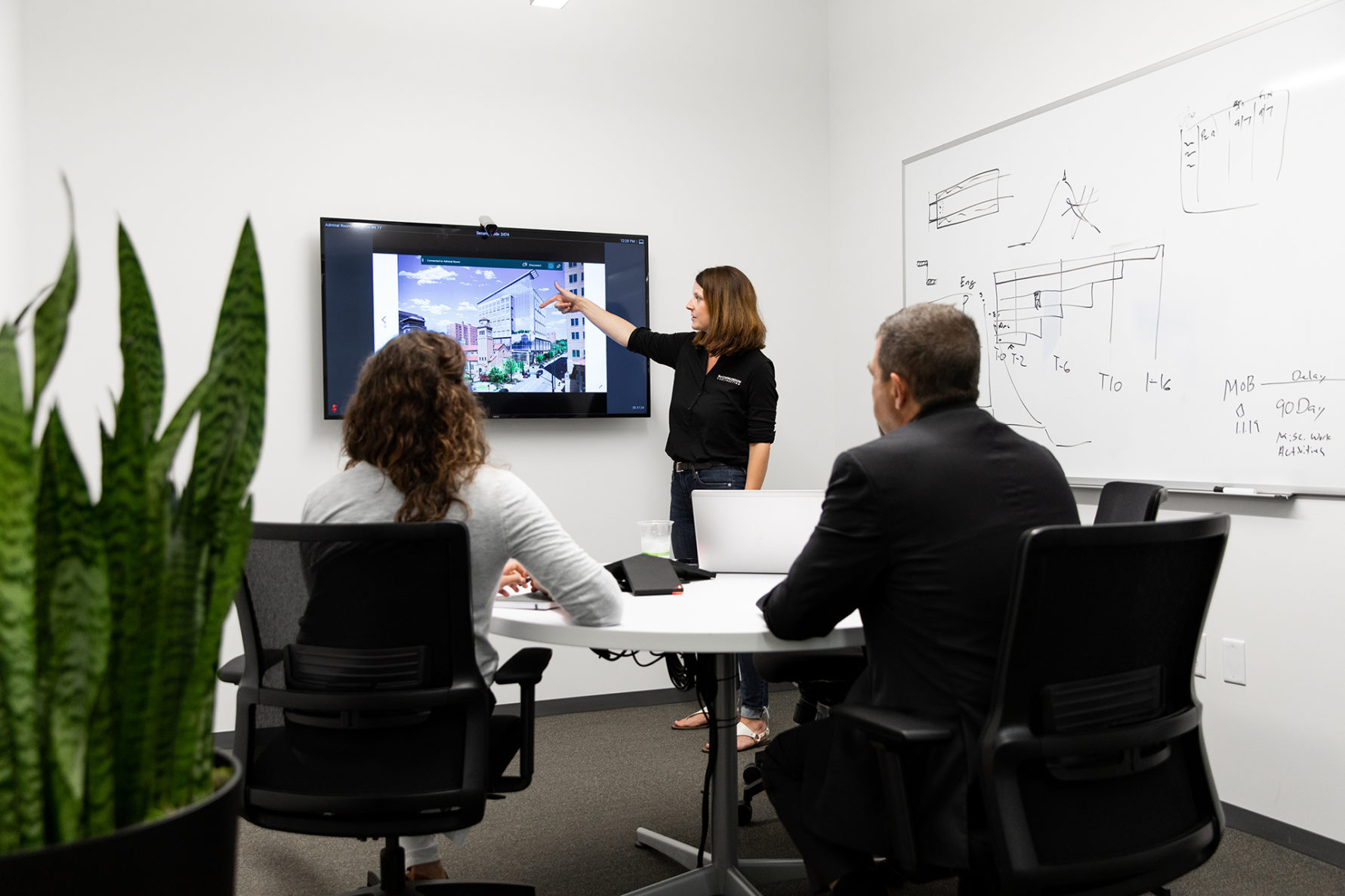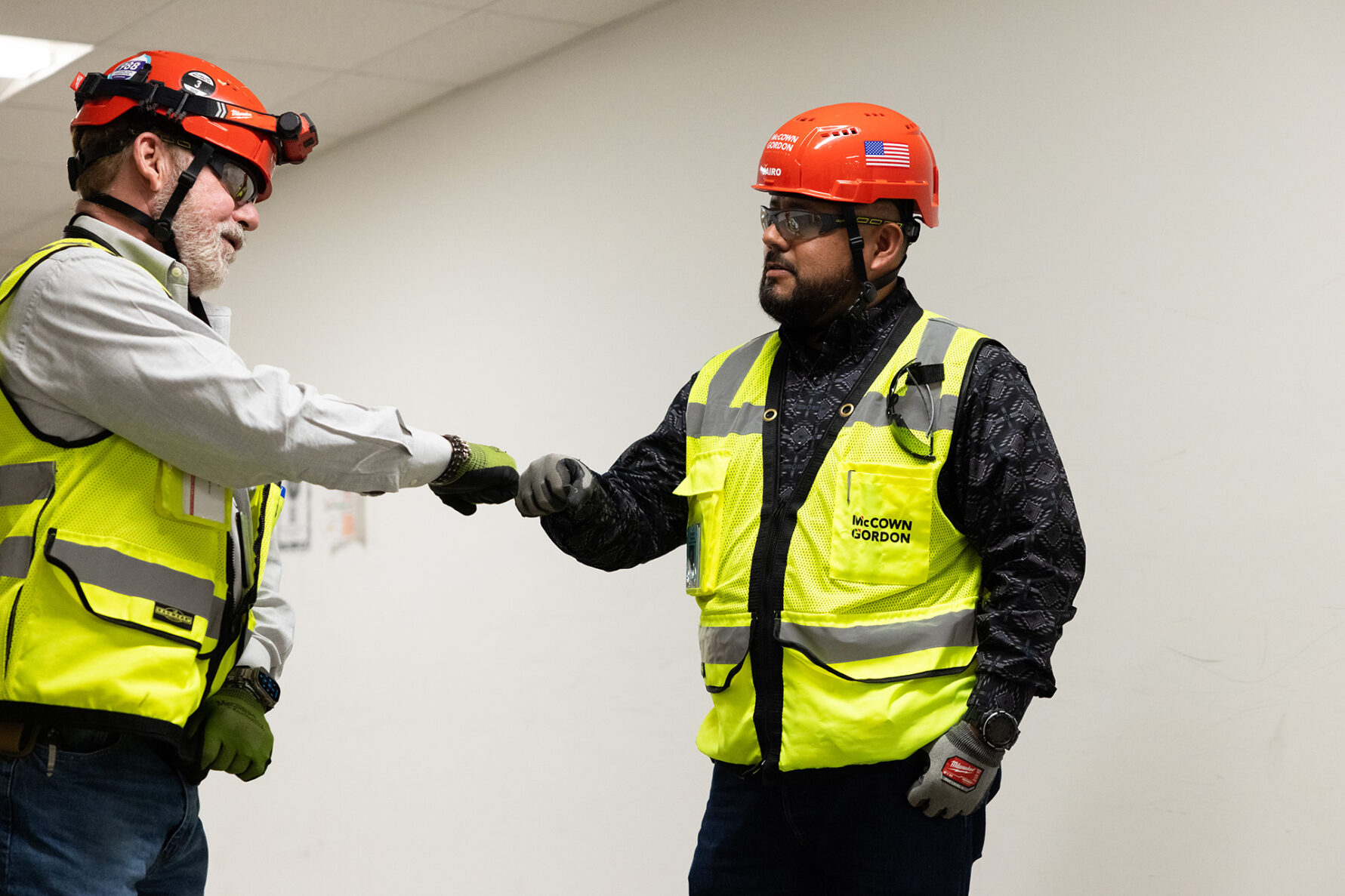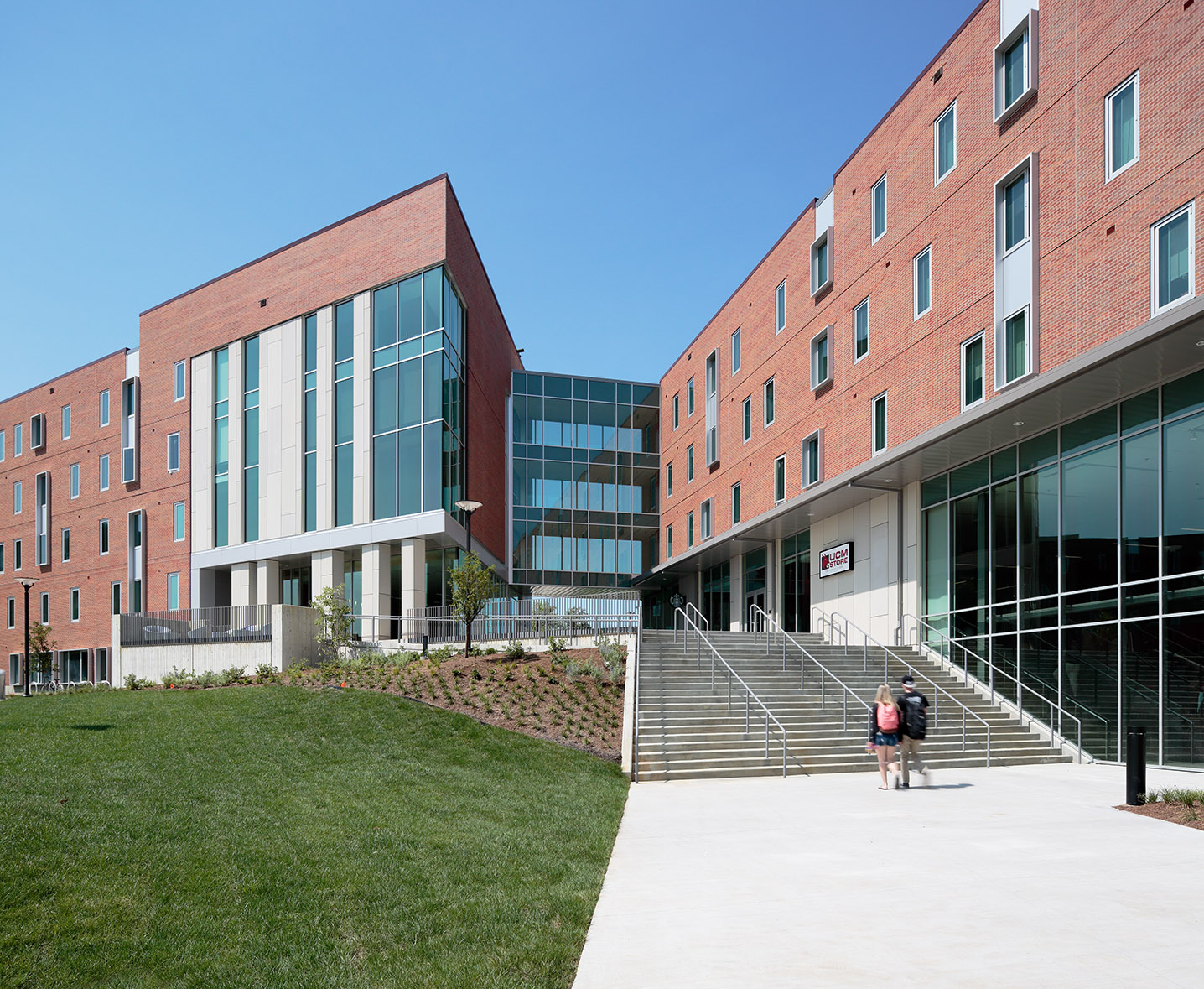What is a site-specific safety plan?
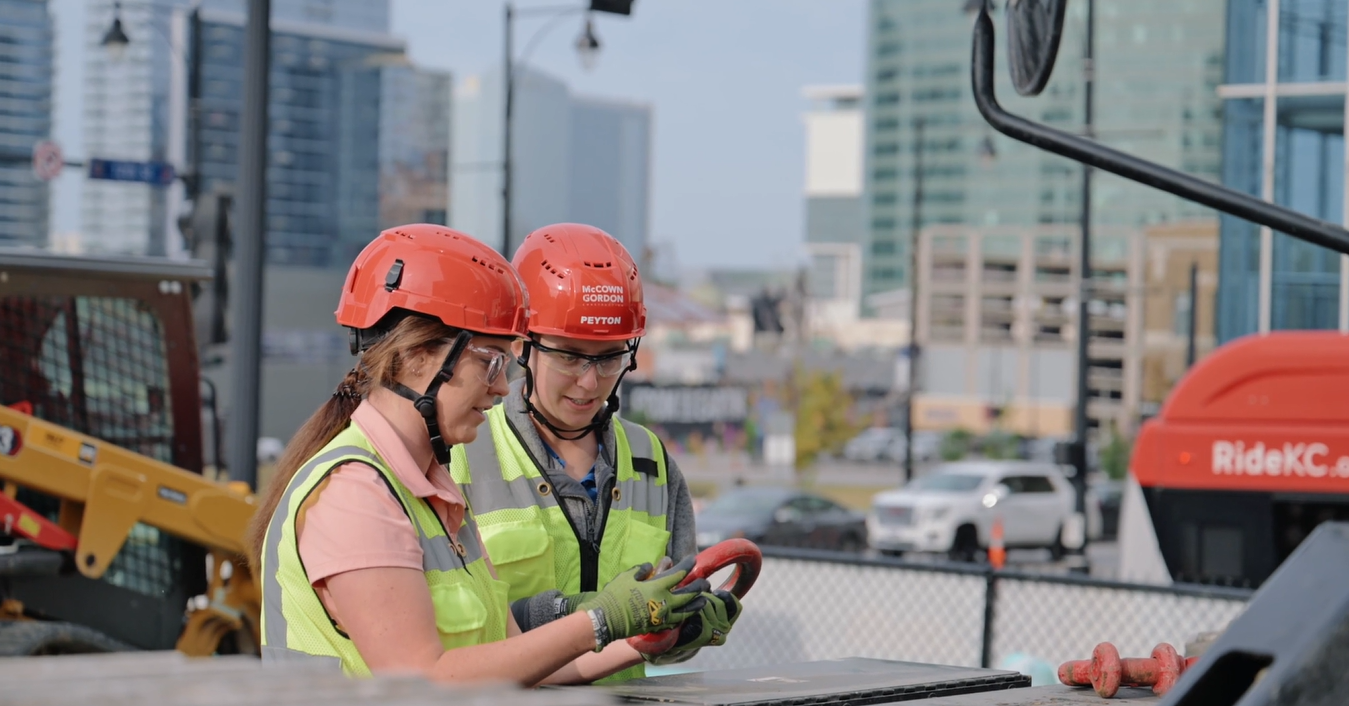
Our team at McCownGordon is proactive in tracking and maintaining the safety of our customers, associates and trade partners during the current pandemic. To learn more about how we are adapting to the ongoing changes, read through our COVID-19 Response Plan.
When it comes to construction, there’s no such thing as “too safe.” In fact, at McCownGordon Construction, we believe a well-crafted safety plan surpasses the expectations of basic guidelines.
Safety isn’t simply a program or requirement; it’s an extension of your general contractor’s values. Meaning, when your general contractor cares as much as you do, the company will provide the best safety standards possible to ensure everyone involved stays protected.
Regardless of the construction project or its size, our team always implements a site-specific safety plan that keeps the safety of our customers and workers at the forefront of everything we do.
Read on to learn more about our safety regulations and how we keep you safe during a construction project.
What is a site-specific safety plan?
A site-specific safety plan is a meticulously constructed set of regulations that consider a site’s unique hazards, personnel involved and the project’s goals. No matter the project scope, a construction site can change from day-to-day, so it’s crucial the plan can adjust quickly and efficiently to accommodate these changes.
According to the Occupational Safety and Health Organization (OSHA), seven key elements form the basis of any effective construction safety plan.
- Management Leadership
- Worker Participation
- Hazard Identification and Assessment
- Hazard Prevention and Control
- Education and Training
- Program Evaluation and Improvement
- Communication and Coordination
Building the foundation: Logistics and Pre-Construction
Your general contractor should always create a logistics plan before construction begins. A well thought out plan doesn’t come from spontaneity or last-minute decision making. That’s why McCownGordon builds a logistic plan the moment you start working with us.
We use the most advanced technologies and methods to route construction-related traffic that is key to managing safety once a renovation or new build starts. For example, we implement virtual technology to show our customers and trade partners crane locations, how equipment will enter and leave the site, when traffic will be heaviest, etc. Our technology increases clarity and improves communication between all parties impacted by the project.
Learn more about construction technology and the latest trends.
Keep in mind a logistics plan is a living document, meaning as the project changes, so does the logistics plan. The goal is to best serve the facility and occupants while reducing the greatest amount of risks. At the end of the day, when we know our customers and workers are safe, we’re able to bring your building to life without putting anyone in harm’s way.
1. Management Leadership
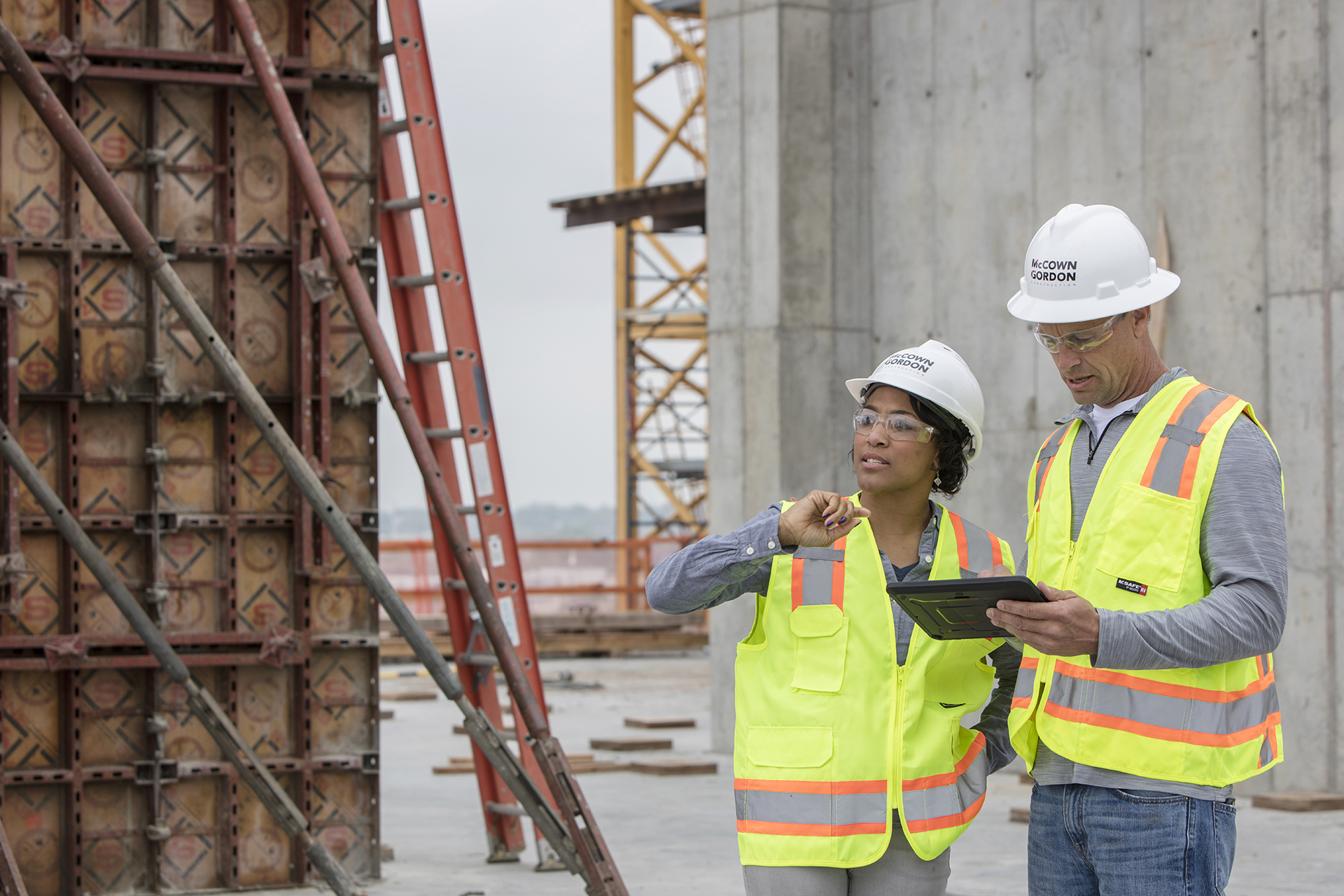
At the core of every safety plan is strong leadership. Without it, your general contractor can’t act as an example for trade partners, motivate construction workers or monitor whether everyone follows safety regulations as they should. Not only does McCownGordon pride ourselves on our leadership, we also pride ourselves on having associates on all levels who are willing to take the initiative needed for the best possible project outcomes.
As an employee-owned company, each of our associates—from entry level to C-level management—strives to put our customers first in all we do. Because of this, we don’t just say we care about your safety, we do whatever it takes to keep your site safe and our team efficient.
2. Worker Participation
At McCownGordon, we ensure our associates and trade partners are willing to put 110 percent into implementing a site-specific safety plan. The foundation of our success for worker participation? Collaboration.
Due to the highly collaborative environment we maintain on every project, everyone (not just the leadership team) becomes involved in the safety-planning process. Plus, our associate diversity allows teams to talk through potential problems from a variety of perspectives. For our customers, that means we analyze every angle, ensuring we don’t leave a single stone unturned.
With active participation from all parties, our associates and partners are personally dedicated to the safety plan’s success. Remember, even with a strong leadership team, a plan will not work if everyone doesn’t do their part to implement it.
3. Hazard Identification and Assessment
Hazard identification is the first step toward creating a prevention plan catered to your site. Therefore, construction safety hazards at another facility may not be an issue at on a current build or renovation. An experienced general contractor can determine what to consider based on the project site specifics.
McCownGordon has extensive experience in a variety of industries such as education, corporate, federal, industrial, healthcare, hospitality and more. As a result, our knowledge spans beyond one area of expertise, allowing us to successfully foresee the potential hazards of different projects.
Common hazards include (but aren’t limited to):
- Tripping, slipping or falling
- Electrical hazards
- Faulty equipment
- Fires
- Excessive fumes
- Improper work habits/equipment operation
- Lack of cleanliness and organization
Checklists are one of the best ways to keep track of site-specific hazards, which you and your contractor can use as a guide for your safety plan.
4. Hazard Prevention and Control
Depending on your site’s unique set up and challenges, how a site-specific safety plan incorporates hazard prevention may be different. Keep in mind a proactive plan is always better than a reactive plan. You don’t want to focus on hazard prevention after someone has already fallen on a slippery ramp or entered the construction area at the wrong time.
For all construction projects, McCownGordon uses OSHA guidelines as a basis, but we always take safety a step further. For example, in some situations, OSHA allows iron workers to work at a maximum of 30 feet without fall protection; we knocked that number down to six feet—because there is no such thing as “too safe” in construction. So while we’re working on a building, trust we are going above and beyond to keep potential hazards at bay.
Other safety measures and protocols we implement on all job sites include:
- Wearing safety glasses 100% of the time
- Placing signage throughout the building to maintain communication and keep workers and your team informed
- Providing overhead protection in case anything falls
- Limiting noise as much as possible
- Checking for off-hour availability (finding times to work while no one is inside the building)
- Following air quality standards to keep you comfortable
- Monitoring utilities (i.e. making sure we don’t activate the indoor sprinkler system)
- Utilizing our Building Performance Solutions team to monitor plumbing, electrical and mechanical challenges.
Learn more about our Building Performance Solutions team at McCownGordon →
5. Education and Training
Without proper training, a site-specific safety plan will fail. For this reason, we require safety training for all field associates. Angela Cloud is a certified safety trainer, allowing us to provide the best education for staff and building occupants.
We also use consultants, when necessary, for additional ongoing safety training, including excavation training and focus-four training, and we are an OSHA Build-Safe Partnership Program participant. Our goal is to do everything we can to help you feel at ease about the active safety culture we employ during your construction project.
Once our on-site workers complete their safety orientation, they receive a customized sticker for their hard hats. This ensures we know everyone on site has completed all required training and understands all safety protocols.
6. Program Evaluation and Improvement
Any construction project, whether a renovation or new build, is always changing, so what worked one day may not work the next. While we pride ourselves on being forward thinking, the only true way to keep up with an evolving environment is through dedicated monitoring and evaluation.
Throughout a construction project, McCownGordon uses a weekly, in-depth safety tool that includes a list of 86 questions. This allows us to stay on top of any changes and to ensure our associates and trade partners are following the highest standards possible. Whenever necessary, we make tweaks to our site-specific plan to further improve the project’s outcome and your satisfaction from start to finish.
7. Communication and Coordination
Even the greatest site-specific safety plan will fall flat without proper communication and coordination. Think about it this way. If engineering services can’t communicate factors that may lead to an electrical issue, then the safety team can’t identify those factors as a potential hazard. Without that identification, there’s no prevention. Without prevention, there is no effective safety plan.
Each person within a project has to have an open line of communication. At McCownGordon, our associates understand teamwork helps eliminate safety problems that working alone could create.
Learn more about our site-specific safety programs at McCownGordon Construction
At McCownGordon, our team of builders and engineers maintain a customer-focused mentality, allowing us to outperform even your highest expectations. Dedicated to promoting integrity, performance and relationships, it’s our people and values that truly make the difference.
Our customers aren’t simply another project; they’re an extension of our team and community. Together, we don’t just build—we bring creative visions to life. From first thought to final nail, we deliver quality work to ensure our builds stand above the rest.
We have four regional offices —Kansas City, DFW, Manhattan and Wichita. Call us at 888-304-4929 or use our free online quote tool to start building today.

